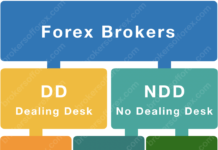Forex (Foreign Exchange Market, FX, Currency Market) is an international exchange market where traders buy and sell currencies. The history of the Forex market can be traced to the 70s when floating currencies and free exchange rates became available. This environment enabled participants in the market to determine the price of one currency versus another, depending on the demand and supply for that currency.

Copyright : Aleksandr Khakimullin / 123RF Stock Photo
A unique market
A couple of reasons make Forex a unique market. It is one of the few markets free of external controls, which reduces the risk of manipulation. It is also the largest and most liquid financial market in the world, with trades of over one trillion US dollars a day. When such a huge amount of money moves so quickly, it would be impossible for a single investor to influence the price of a major currency. Also, the market’s liquidity allows traders to open and close positions within a few seconds as there are always willing sellers and buyers at any point.
The Forex market is also distinguished by the variance in its participants. Traders and investors have a number of reasons for playing the market. Some are long-term hedge investors while others are seeking short term gains. In contrast to blue-chip stocks favored by long term investors, the combination of the constant and small day-to-day fluctuations in currency prices draw investors with a broad range of strategies.
Basics of currency trading
Simply put, currency trading involves exchanging one country’s currency for another country’s currency. The two currencies make up a ‘currency pair’, with currencies always traded in pairs. Each currency is represented by three letters, the first two referring to the country and the third identifying the currency. For instance USD is the United States Dollar and JPY is the Japanese Yen.
Forex pairs are read in the opposite direction of mathematical proportions. For instance, EUR/INR = 76.7245 means that one Euro (referred to as the base currency) is equal to 76.7245 Indian Rupees (referred to as the quote currency). So you’ll have to pay 76.7245 Rupees to buy 1 Euro.
How Forex works
Foreign currency transactions are not centralized on an exchange and occur all over the world through telecommunications. The market is open for trading 24 hours a day and five days a week. Across every time zone in the world, dealers quote for major currencies.
Market timings in GMT (Greenwich Mean Time)
| Region | City | Open | Close |
|---|---|---|---|
| Europe | London Frankfurt | 8:00 7:00 | 17:00 16:00 |
| United States | New York Chicago | 13:00 14:00 | 22:00 23:00 |
| Asia | Tokyo Hong Kong | 00:00 (Midnight) 1:00 | 9:00 10:00 |
| Pacific | Sydney Wellington | 22:00 22:00 | 7:00 6:00 |
Once you decide what currency to buy, you can contact a dealer to initiate the transaction. Investors often take out a credit line to trade in currency prices, which greatly increases their potential profits (or losses). This is known as margin trading.
A closer look at margin trading
Margin trading basically refers to trading currencies with borrowed capital. It is a popular choice among traders/investors because it allows investments to be made without requiring a real money reserve. Investors can invest a significant amount of money and open bigger positions with lesser money transfer costs. The trading is quantified in lots, with the standard size of one lot being $100,000, which can be acquired by investing as less as 0.5% or $500. When you want to close a position, the amount you deposited is returned to you and your gains or losses are calculated. The profit or loss amount is then credited to your account.
Fundamental analysis and technical analysis
In fundamental analysis, you analyze the country of the currency or currencies you’re interested in, considering such factors as its economy, political environment and other indicators, including and not limited to unemployment level, interest rate, inflation and tax policies. Additionally you factor in the anticipations and expectations of market participants to form an overall view.
Technical analysis is based on the assumption that all the information on the Forex market and future currency fluctuations are present in the price chain. That means all the factors likely to effect currency rates have already been considered by the market and reflected in the price. So, investment decisions are made on three suppositions: factors impacting prices have already been considered by the market, price movements are directly tied to these factors/events, and that history repeats itself. The idea here is not to beat the market or invest with a long-term view, rather look at currency fluctuations in the recent past and predict whether or not the small fluctuations will continue.
When done smartly, Forex investing can be highly rewarding. Over time, with knowledge-building and experience, you will be able to read currency fluctuations better to make judicious investment decisions.










